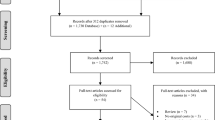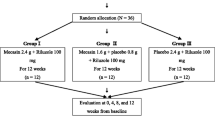Summary
We conducted a cost-benefit analysis of riluzole therapy in patients with amyotrophic lateral sclerosis (ALS; motor neuron disease; Lou Gehrig’s disease). The survival of patients with ALS increased by around 3 months as a result of riluzole therapy, from 3 to 3.25 years. A 3-month delay in hospitalisation was also expected as a result of riluzole therapy, resulting in a saving of $US40 per patient (1996 values). This gain was opposed by the additional costs per patient of bimonthly serum ALT monitoring ($US234), 2 days of extra day-hospital observation ($US369) and other medical costs ($US79), as well as extra outpatient visits ($US26) and costs of medication other than riluzole ($US90), resulting from increased longevity.
Using riluzole (at a cost of $US2247 per patient) resulted in an extra burden of $US757 on health services for the gain of an extra 3 months of life expectancy. Thus, health-service costs per life-year gained were $US12 013. Despite the increase in health-service costs as a result of increased longevity, the overall resource benefits to society from using riluzole amounted to $US2884 due to increased productivity benefits, giving a benefit: cost ratio of 1.28: 1. Total benefits to society, including a valuation of 3 extra months of life ($US3599), amounted to $US6483, giving a benefit: cost ratio of 2.89: 1. Therefore, from a societal perspective, the potential benefits of riluzole in patients with ALS clearly exceed costs.
Similar content being viewed by others
References
Norris F, Shepherd R, Denys E, et al. Onset, natural history and outcome in idiopathic adult motor neuron disease. J Neurol Sci 1993; 118: 48–55
Carosico JT, Mulvihill MN, Sterling R, et al. Amyotrophic lateral sclerosis: its natural history. Neurol Clin 1987; 5: 1–8
Kondo K, Hemmi I. Clinical statistics in 515 fatal cases of motor neuron disease. Neuroepidemiology 1984; 3: 129–148
Jablecki CK, Berry C, Leach J. Survival prediction in amyotrophic lateral sclerosis. Muscle Nerve 1989; 12: 833–841
Bach JR. Amyotrophic lateral sclerosis: communication status and survival with ventilatory support. Am J Phys Med Rehabil 1993; 72: 343–349
Kurtzke JF. Risk factors in amyotrophic lateral sclerosis. Adv Neurol 1991; 56: 245–270
Chancellor AM, Slattery JM, Fraser H, et al. The prognosis of adult-onset motor neuron disease: a prospective study based on the Scottish Motor Neuron Disease Register. J Neurol 1993; 240: 339–346
Malgoris C, Daniel M, Doble A. Neuroprotective effects of riluzole on N-methyl-D-aspartate- or veratridine-induced neurotoxicity in rat hippocampal slices. Neurosci Lett 1994; 177: 95–99
Martin D, Thompson MA, Nadler JV. The neuroprotective agent riluzole inhibits release of glutamate and aspartate from slices of hippocampal areaCAl. Eur J Pharmacol 1993; 250: 473–476
Couratier P, Sindou P, Esclaire F, et al. Neuroprotective effects of riluzole in ALS CSF toxicity. Neuroreport 1994; 5: 1012–1014
Doble A, Hubert JP, Blanchard JC. Pertussis toxin pretreatment abolishes the inhibitory effect of riluzole and carbachol on D-[3H] aspartate release from cultured cerebellar granule cells. Neurosci Lett 1992; 140: 251–254
Debono MW, Le Guern J, Canton T, et al. Inhibition by riluzole of electrophysiological responses mediated by rat kainate and NMDA receptors expressed by Xenopus oocytes. Eur J Pharmacol 1993; 235: 283–289
Hubert JP, Delumeau JC, Glowinski J, et al. Antagonism by riluzole of entry of calcium evoked by NMDA and veratridine in rat cultured granule cells: evidence for a dual mechanism of action. Br J Pharmacol 1994; 113: 261–267
Rothstein JD. Excitotoxic mechanisms in the pathogenesis of amyotrophic lateral sclerosis. Adv Neurol 1995; 68: 7–20
Shaw PJ. Excitotoxicity and motor neuron disease: a review of the evidence. J Neurol Sci 1994; 124 Suppl.: 1–13
Meldrum B. Amino acids as dietary excitotoxins: a contribution to the understanding of neurodegenerative disorders. Brain Res Rev 1993; 18: 293–314
Bensimon G, Lacomblez L, Meninger V, ALS/Riluzole Study Group. A controlled trial of riluzole in amyotrophic lateral sclerosis. N Engl J Med 1994; 330 (9): 585–591
Lacomblez L, Bensimon B, Nigel-Leigh P, Amyotrophic Lateral Sclerosis Group II, et al. Dose-ranging study of riluzole in amyotrophic lateral sclerosis. Lancet 1966; 347: 1425–1431
Guiloff RJ, Goonetilleke A, Emami J. Riluzole and amyotrophic lateral sclerosis [letter]. Lancet 1996; 348: 336–337
Monthly Bulletin of Price Statistics, vol. 47, no. 9. Jerusalem, Israel: Central Bureau of Statistics, 1996 Sep
Ministry of Health. Hospitalization prices from 1.1.96 [in Hebrew]. Jerusalem: Ministry of Health; 1991 Dec. Report no.: 1/96.
Benefit Research Group. Riluzole vs usual care in the treatment of ALS: an international economic evaluation. Montreal: Benefit Canada Medico-economic Studies, 1996
Information and Computing Unit. Price list of ambulatory services [in Hebrew]. Jerusalem: Ministry of Health; 1995 Jan
Central Bureau of Statistics. Statistical abstract of Israel: no: 46. Jerusalem: Hemed Press, 1995
Ginsberg GM. Cost-effectiveness analysis, cost-benefit analysis and the value of life in health care and prevention. In: Laaser U, Roccella EJ, Rosenfeld JB, et al., editors. Costs and benefits in health care and prevention. Berlin: Springer-Verlag, 1990: 6–19
Ginsberg GM, Shouval D. Cost-benefit analysis of a nationwide neonatal inoculation programme against hepatitis B in an area of intermediate endemicity. J Epidemiol Community Health 1992; 46: 587–594
Ginsberg GM, Tulchinsky TH. Cost-benefit analysis of a second measles inoculation of children. In: Kurstack E, editor. Measles and poliomyelitis: vaccines and immunization. New York: Springer-Verlag, 1993: 101–117
Ginsberg GM, Dagan R. Cost-benefit analysis of Haemophilus influenzae type b vaccination programme. J Epidemiol Community Health 1993; 47: 485–490
Author information
Authors and Affiliations
Corresponding author
Rights and permissions
About this article
Cite this article
Ginsberg, G.M., Lev, B. Cost-Benefit Analysis of Riluzole for the Treatment of Amyotrophic Lateral Sclerosis. Pharmacoeconomics 12, 578–584 (1997). https://doi.org/10.2165/00019053-199712050-00008
Published:
Issue Date:
DOI: https://doi.org/10.2165/00019053-199712050-00008




